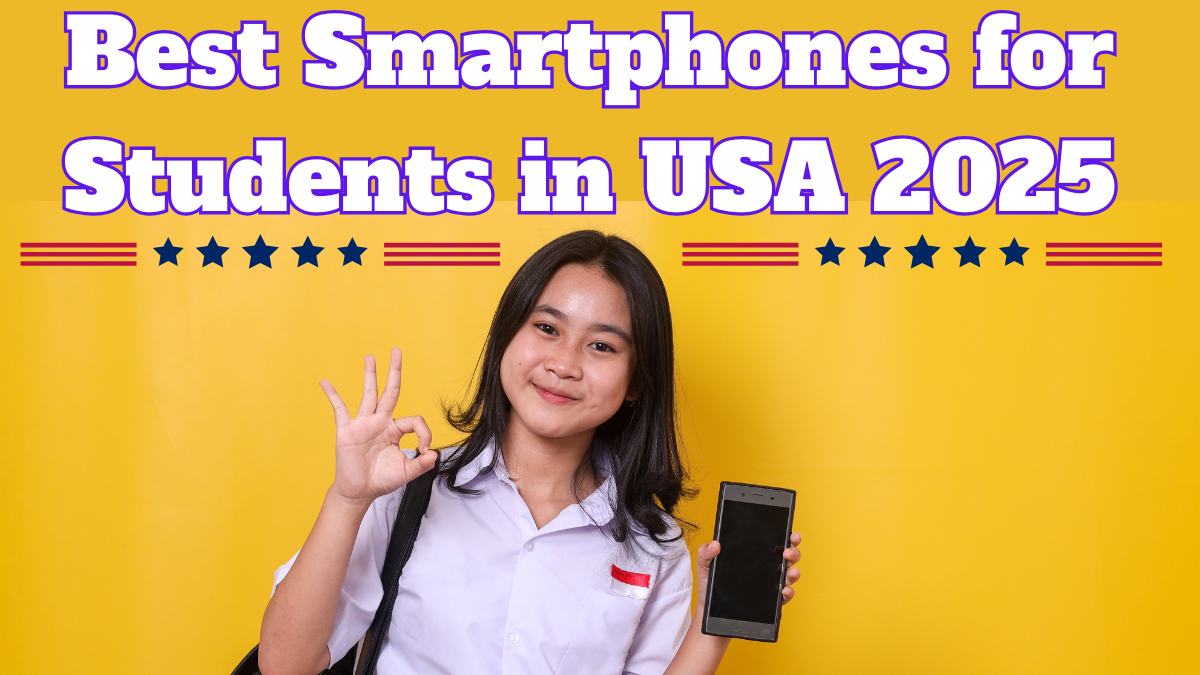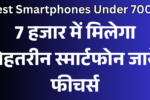Best Smartphones for Students in USA 2025: Latest Update
Finding the right smartphone as a student can be a daunting task, especially with so many options on the market. Students need a phone that balances affordability, performance, durability, and practicality. Whether it’s for taking notes, attending virtual classes, managing schedules, or staying connected with friends and family, a good smartphone is a vital tool. This guide will walk you through the best smartphones for students in the USA in 2025. We’ll discuss key features, budget considerations, and comparisons to help you make the best choice.
Key Factors to Consider When Choosing a Smartphone for Students
Before jumping into the list of top devices, let’s understand the factors that students should prioritize when buying a phone:
- Affordability – Students often operate on tight budgets. Affordable phones with good value for money are essential.
- Performance – A fast processor and sufficient RAM are critical for tasks like multitasking, note-taking apps, and browsing.
- Camera Quality – High-quality cameras may not be a must, but they are useful for scanning documents, capturing memories, and video calls.
- Battery Life – Long-lasting batteries are non-negotiable, especially for students who spend long hours on campus or commuting.
- Durability – Phones should be sturdy or have water and dust resistance to withstand everyday use.
- Software Updates – Phones receiving regular updates ensure better security and access to new features.
- Storage Space – With apps, photos, and documents, sufficient storage capacity is crucial.
Now that you know what to look for, let’s explore the top smartphones for students in 2025.
Top 5 Smartphones for Students in USA 2025
Here’s a table summarizing the best smartphones for students, followed by detailed descriptions for each.
| Smartphone | Price (USD) | Key Features | Pros | Cons |
|---|---|---|---|---|
| iPhone SE (3rd Gen) | ~$429 | A15 Bionic chip, iOS support | Affordable Apple device, compact design | Small screen, no Face ID |
| Google Pixel 6a | ~$349 | Tensor Chip, stock Android | Excellent camera, budget-friendly | Average battery life |
| Samsung Galaxy A54 5G | ~$449 | AMOLED screen, great battery | Long battery life, good display | Plastic body design |
| OnePlus Nord N30 5G | ~$299 | 120Hz LCD, Snapdragon 695 | Great value, sleek design | Mid-range camera performance |
| Moto G Power (2025) | ~$199 | 5000mAh battery, sturdy build | Extremely affordable, long battery life | Basic display, limited camera quality |
Now, let’s dig deeper into the features, pros, and cons of each phone.
1. iPhone SE (3rd Gen)
Apple’s iPhone SE (3rd Gen) is perfect for students who want the iOS experience without breaking the bank. Priced at around $429, it offers excellent performance in a compact package.
-
Key Features:
- A15 Bionic chip (same as in iPhone 13)
- 12MP rear camera
- Up to 256GB storage
- 5G connectivity
-
Pros:
- Affordable entry into the Apple ecosystem
- Regular software updates for years
- Compact size for easy one-hand use
-
Cons:
- Small 4.7-inch LCD display
- Traditional design with big bezels
The iPhone SE is a fantastic choice for students who prioritize longevity and an intuitive operating system.
2. Google Pixel 6a
Google Pixel 6a is another excellent option for budget-conscious students who enjoy photography. At ~$349, it delivers in both performance and style.
-
Key Features:
- Tensor processor
- 6.1-inch OLED display
- 12MP dual rear cameras
- 5G support
-
Pros:
- Stock Android experience with no bloatware
- Superb cameras for its price range
- Regular security and Android updates
-
Cons:
- Battery life could be better
- No wireless charging
The Pixel 6a is ideal for students who need a lightweight phone with an impressive camera and clean user interface.
3. Samsung Galaxy A54 5G
Samsung never disappoints with its mid-range offerings, and the Galaxy A54 5G lives up to expectations. It is priced at ~$449 and features great looks and specs.
-
Key Features:
- 6.4-inch Super AMOLED display
- 120Hz refresh rate
- Exynos 1380 chipset
- Gorilla Glass for scratch resistance
-
Pros:
- Vibrant display for streaming or studying
- Long battery life
- Good software support for several years
-
Cons:
- Plastic back design
- Mid-range performance for gaming
This phone is perfect for students looking for reliable performance, a great display, and long-lasting battery life.
4. OnePlus Nord N30 5G
OnePlus has built a reputation for balancing cost and functionality, and the Nord N30 5G continues that trend. At ~$299, it is one of the most affordable 5G phones on the market.
-
Key Features:
- 6.72-inch, 120Hz LCD display
- Snapdragon 695 processor
- 108MP rear camera
- 5000mAh battery with 50W charging
-
Pros:
- Smooth and fluid display
- Excellent value for money
- Clean OxygenOS experience
-
Cons:
- Average low-light camera performance
- No official IP rating for water resistance
The Nord N30 5G is a great pick for students who want strong performance without emptying their wallets.
5. Moto G Power (2025)
For students on a tight budget, the Moto G Power (2025) is a lifesaver at just ~$199. It prioritizes battery life and durability over luxury.
-
Key Features:
- 6.5-inch HD+ display
- Huge 5000mAh battery
- Qualcomm Snapdragon 680 processor
-
Pros:
- Exceptional battery life (up to 3 days)
- Durable and sturdy build
- Surprisingly good performance for the price
-
Cons:
- Lower resolution screen
- Mediocre camera
The Moto G Power (2025) is the ultimate budget option for students who need a no-frills phone.
Step-by-Step Guide to Choosing the Right Smartphone
Here’s how you can select the ideal smartphone based on your needs:
- Set a Budget – Determine how much you’re willing to spend. This will help you narrow down your options.
- List Your Priorities – Decide what matters most (battery life, camera, performance, etc.).
- Research Features – Compare the features of models within your price range.
- Consider Software – Choose between iOS, Android, or another operating system based on your preference.
- Check Durability – Look for phones with Gorilla Glass, water resistance, or sturdy build quality.
- Read Reviews – Find reviews from real users and tech experts to make informed decisions.
- Test if Possible – If you can, visit a store to test the phone’s feel and functionality.
FAQs about Smartphones for Students
1. How much should a student spend on a smartphone?
Students should aim for a smartphone between $200 and $500. This range offers good performance without overspending.
2. Which operating system is better for students, Android or iOS?
It depends on personal preference. Android offers more affordable options and customizability, while iOS provides a smoother ecosystem and better longevity.
3. What is the most important feature for a student’s phone?
Battery life and durability are crucial, as students need a phone that can last through long days of classes and studies.
4. Are refurbished smartphones a good choice for students?
Yes, reputable refurbished phones can save money while offering similar performance to new devices.
5. Should students prioritize 5G capability?
5G is not essential but adds value for better internet speeds and future-proofing.
Conclusion
Selecting the best smartphone for students in 2025 comes down to understanding your needs and budget. Whether you want the reliability of an iPhone SE, the photography excellence of a Pixel 6a, or the affordability of a Moto G Power, there’s something for everyone. Carefully evaluate the features and pros/cons to make an informed decision. Happy shopping!


